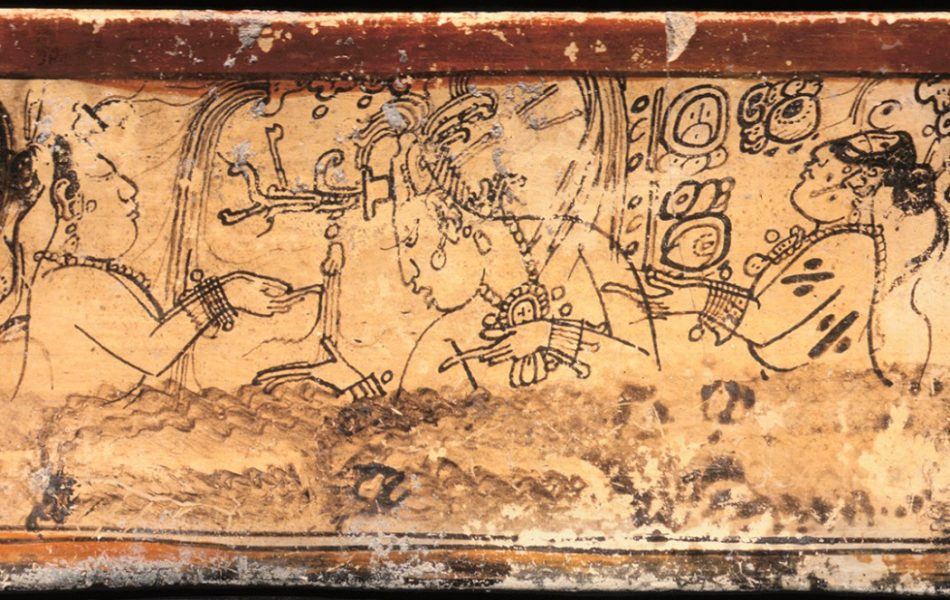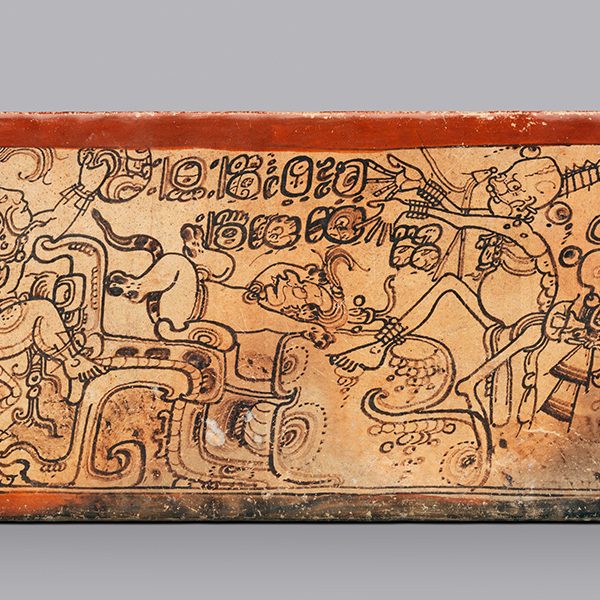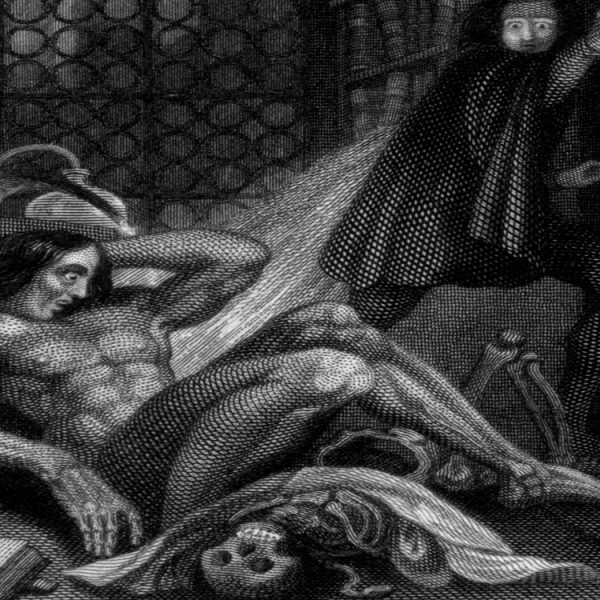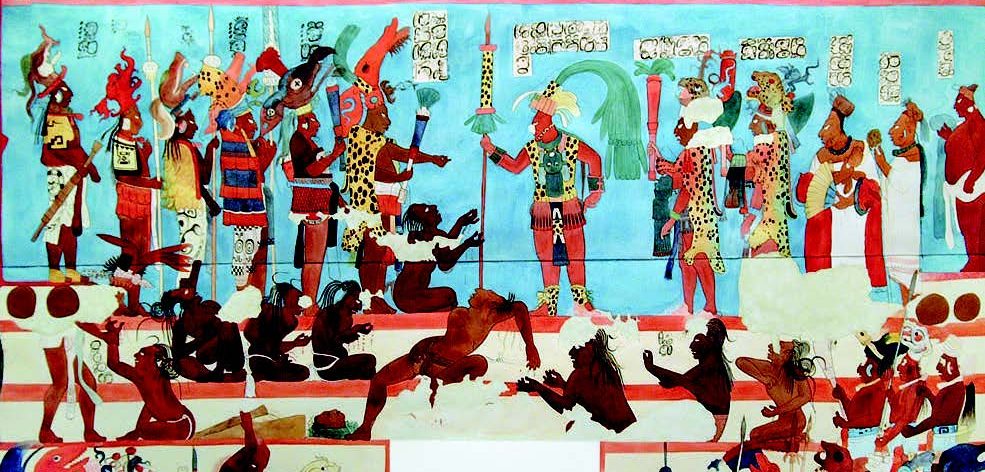Sneak Peek from Stephen Houston, The Life Within: Classic Maya and the Matter of Permanence
In March, we will publish a groundbreaking new book about Maya animism and how their belief system informed their choices in and uses of artistic materials. Renowned Mayanist scholar Stephen Houston provides startling insights into a Pre-Columbian worldview that dramatically contrasts with western perspectives. The following excerpt delves into the concept of beauty.
A Beauty that Cannot Die
All the Flowers of the Spring, Meet to perfume our burying.
—John Webster, The Devil’s Law Case
If the play of materials and the investment of life concerned the Classic Maya, so did another motivator: the search for beauty. But there is a problem. Beauty is central to human experience, yet, in general, no one knows quite what it is or what to make of it. To one philosopher, beauty “remains a bit of a mystery, forever a step beyond anything I can say.”1 Inducing longing and desire, it asks to be enfolded, possessed, and judged. The beautiful also implies the ugly. Attraction contrasts with repulsion, its very opposite. Beauty draws in, the disgusting pushes away. In between, prompting little response, are the unremarkable and routine.
For all their importance, the predicates of beauty — the features perceived to be deeply appealing — evade any universal agreement. They result from, and help to establish, “smaller societies” or “groupings” of people who find beauty in the world. From these assemblies arise the local canons of aesthetic merit, varied claims to usefulness as a criterion of beauty, and a search for the exemplary along with the consistent and expected. Where society is invoked, sociology intrudes, too. For the sociologist Pierre Bourdieu, there is no “pure gaze.” No one stands outside history or the positions of privilege that determine beauty, its making, acquisition, and judgment. That humans delight in pleasing things characterizes the species. They attune everywhere to the quality and intensity of that experience. They discriminate. But the claims of Western philosophy, in active colonization of other thought, command a response from those born far away and long ago. They knew nothing of Plato, Kant, or Arthur Danto. They did not sign on to European or present-day proposals for defining, ordering, and evaluating the good and the commendable.
Staking out a theory, Alfred Gell suggests that this work is hardly worth the trouble. Aesthetics should fall to the “critic” fussing over “interior mental acts.”2 Anthropology, where some of us live, should stick to “social relationships” rather than “Kantian high-bourgeois aesthetics.” Bunkum, I say: what was prized, valued, admired, and reinforced speaks to the core of ancient motivation, even if mediated by “social identities and differences.” This was especially so in the courtly setting of Maya imagery, subject to the competitive judgment introduced in Chapter 1 and its shifting foci of refinement. In any case, with humans, all conceivable acts have an “interior mental” origin. The confident hope is that assays of visual merit, desirable line, and pleasing form conform to recoverable principles.
There is no denying the difficulty of finding principles. Talking to the Classic Maya is an impossibility, much less asking them about aesthetics. In later languages, including those from the early Colonial period, “beauty” concerns some property of being “good,” utz.3 In Colonial Tzotzil, from Chiapas, Mexico, a relevant term is t’ujum, from “clear and without sediment, elegant,” but built on a word for chosen or winnowed, the best wheat or rice (neither crop very ancient for the Maya) separated from the flawed or mediocre. Yukatek Maya of about the same time emphasizes the qualities of polish or smoothness, goodness, or a sweet sentiment of contentment, ki’ oltsil. Colonial Tzendal of Chiapas, Mexico, weigh in with utzilel, “to look good.” And an unrelated term for Ch’orti’, a close relation of the language of the Classic inscriptions, treats “beauty,” ban, in terms of “goodness” and affirmation but also “usefulness,” an efficacy of “remedy,” and an expression for polished manner and behavior. As a word, utz in its various permutations is exceedingly ancient, from the beginnings of Mayan languages. But its appearance in glyphic texts is limited to the Postclassic codices, where it refers to the “goodness,” yutzil, connected to gods in certain auguries, and, in the Classic period itself, to use in mythic scenes from painted ceramics. Other terms come into play, lekil, “polished,” like shiny stone, or even pok-baijel, “cleansed,” “purified,” both, too, from Colonial Tzotzil.
More direct clues come from what the Classic Maya valued: anything green, jade-like. The value of such stone can be surmised by its concentration among elites. They shaped it into jewelry, replaced dead flesh with surfaces composed of jade mosaics, and, with much pain and bother, inserted inlays of this material into their teeth. The cold calculation of an economist would confirm why the material was esteemed. It is scarce, if not in its home area of the Motagua River valley of Guatemala, also obdurate to work, each object the result of much lavish human sweat. As pointed out in Chapter 1, even a modest piece would require long hours of fracturing, sawing, drilling, grinding, polishing.4 Only a small quantity of jade would be worthy of working and transport, yielding, for the Classic Maya, a verdant surface that contrasted with the translucence cherished by earlier peoples in Mesoamerica. Limited supply and high demand both equate to a coveted good, a clear token of the desires that lurk behind most economic theory.
The logic is irrefutable. Yet, as explained in previous pages, it bypasses an essential element of Classic Maya beauty. The overriding focus is on the ephemeral, the growing, and the life-giving, a green-blue of fresh growth, yax in Classic Maya, whose secondary meanings, not coincidentally, extend to “new” and “first.”5 The great ceiba tree, thought to grow centrally, was called the yaxte’, the “green-blue tree,” its origins probably going back, by millennia, to a green maize plant at the center of a cultivated field.6 The color of water to nourish crops, yax is often, in Classic times, slathered on figurines, ceramics, and beads in the form of Maya blue, a vivid pigment of complex manufacture (fig. 76). The green-blue of the Maya glimmers off the quetzal plumes worn by kings and presented as tribute. The attraction here is not only to color but to its visual play, its sheen, its near wetness, dew- or rain-soaked, an intense saturation that might also shift, with light, to other tones. As captured by admiring views in paint, young bodies are likened to that most elegant of dancers, the supple Maize God. No great imagination is needed to see his graceful body in a growing maize plant. Swaying to warm breezes, he rises up from the split ground — the identification of a rooted plant with dance hints, too, at the stately nature of this performance.

Fig. 76: Maya blue on figurine, Jaina-style whistle, c. A.D. 700, Campeche, Tabasco, or Chiapas, Mexico (Dumbarton Oaks Research Library and Collection, Washington, D.C., PC.B.559)
Unique among Classic Maya deities, the Maize god neither dominates nor governs but finds his way into human maws, an offering that nourishes the body and renews itself seasonally as a source of food. Born as a young adult, never aging, he is the chief contributor to human flesh. Humans in turn offer their own flesh in covenants with gods, eating plants and animals, to be served up as morsels for higher beings.7 Yet, with fine delicacy, the god’s passage down the gullet is never shown, only his growth, dressing, dance, watery journey, death, and rebirth (fig. 77). These concerns shift perceptibly in Postclassic times, when gold, copper, and turquoise displace it from aesthetic centrality — a different kind of sheen, the metallic, comes to dominate the Maya aesthetic. Classic imagery abounds, too, with flowers and tags to their thick fragrance. These hint at paradise along with the fragrant bodies and speech of elites. The Maya show such emanations as looping curves, as part of their depiction of the ephemeral and invisible. Things that pass are asked to stay a while.
Notes
Epigraph: John Webster, The Works of John Webster, Volume 2: The Devil’s Law-Case, A Cure for a Cuckold, Appius and Virginia, edited by David Gunby, David Carnegie, and MacDonald P. Jackson (Cambridge: Cambridge University Press, 2003), 160.
1. Nehamas, Only a Promise, 78. On disgust: Menninghaus, Disgust, which has, on 22–24, strong words of a disapproving sort for Miller, Anatomy of Disgust. On symmetry and beauty: For their part, physicists and mathematicians find “beauty” in symmetry and elegant solution of conjectures; Stewart, Beauty Is Truth, 279; here, in no help at all to art historians, “beauty” boils down to “the human sense of pattern,” “truth” to a “reality check.” Scarry, On Beauty, 46, also allies “beauty” with “truth,” viewing the first as a kind of cultural fuel: “beautiful things have a forward momentum, the way they incite a desire to bring new things into the world.” As with almost all such philosophy, the reader searches in vain for any reference to beauty or relevant thought outside the Western world: not denied, just ignored. Only one illustration or factum in Nehamas, Only a Promise, an otherwise admirable and lucid book, falls outside Europe or the United States, and that image highlights the uncertainties of what “art” might be; 38, fig. 26. A head of Orlan, the French artist and provocatrice, is said to be a “surgical self-transformation”—in fact, it reproduces a photographic overlay of an unremarked design from an Olmec mask of c. 900 B.C.; 38, fig. 27. The presumed inconsequentiality of separate traditions may be unconscious, but it is no less troubling when basic universality is the claim. A useful compendium on the non-Western appears in Coote and Shelton, Anthropology, Art, Aesthetics. Anger about inattention to other systems of aesthetics combusts in Nuttall, Beautiful/Ugly, 6–29, with choice words for Immanuel Kant’s dismissive contempt of Africans. Nuttall, 28, sees beauty in Africa as having a necessary association with “a social inflected ugliness”; it “criss-cross[es] the senses,” with defined limits that involve an “anti-aesthetic.” On groupings: Nehamas, Only a Promise, 81–82. Also, Guyer, Values of Beauty, esp. 73–74, which explores David Hume’s claim that such judgments accrue through careful reflection, that certain judges are privileged, and that the most worthy cynosures of beauty, such as the poetic force of Homer, emanate an intrinsic, absolute quality. On privilege: Bourdieu, “Historical Genesis.” Bourdieu thunders forth in Distinction, 7, which states that, in its “sublimated, refined, disinterested, gratuitous, distinguished” form, aesthetics, in the sense of taste making and taste discrimination, serves “a social function of legitimating social differences.” That the argument is partly persuasive does not absolve it of simplistic reduction. What the Classic Maya did not read: Danto, Abuse of Beauty, which, on 40–44, reroutes non-Western concepts through . . . Kant and Hegel’s benighted views of them. And much other literature, too. I have measured: books on aesthetics and beauty at the Clark Institute, a comprehensive research library on art history, fill some 27 linear feet of shelving. Daunting, they would take a career to read, assimilate, and critique.
2. Gell, Art and Agency, 3, 4, 81, 82. In fairness, these words were published in a posthumous book. Gell did not live to revise his draft. For Maya courts: Houston, “Best of All Things,” esp. 86–89. On accentuation of aesthetic judgment as a touchstone of “gentility,” see Bushman, Refinement of America, xv–xix. The genesis of such discussion remains Simmel, “Fashion.” Exploration of Maya courts in Houston and Inomata, Classic Maya, 150–58.
3. The links of beauty to goodness, and the limits of that bond, find a reverberant echo in Western philosophy, e.g., Danto, “Beauty and Morality.” On colonial Tzotzil references: Laughlin, Great Tzotzil Dictionary, 1:185, 314, and 324. Colonial Yukatek: Barrera Vásquez, Diccionario Maya Cordemex, 185, 314, 320. Nonetheless, the prefix in one relevant term, hats’uts, is like Yukaktek hach, an intensifier meaning “very, many, truly,” p. 167. Tzendal: de Ara, Vocabulario tzeldal, 413. Ch’orti’: Taken from the Charles Wisdom lexicon at the University of Chicago, transcribed by Brian Stross. This term may be spelled ba-ni, baan, on a vessel from the Mundo Perdido complex at Tikal, Guatemala; Laporte and Fialko, “Mundo Perdido,” esp. fig. 68. Postclassic texts: Dresden Codex, 8a, 7a, with an occasional negation, spelled ma-tzi-IL to render ma-‘utzil, “not goodness.” Mythic scenes, often recording conversations, use u-tzi > uutz, on K4999, 7727, both in association with a high deity known to scholars as “God D.” A rare spelling from a historical setting appears with a youth on the East Alfarda, Temple XXI, Palenque; Schele and Mathews, Bodega of Palenque, pl. 555.
4. My thanks to Brigitte Kovacevich for this information; Chenault, “Technical Analysis,” 64–66, see also chapter 3, fn. 27; Chenault, “Jadeite, Greenstone.” An astonishing source on Maori jadeworking, involving nephrite, also from Kovacevich, indicates that polishing could go on for months, years, and, for one famous object, the mere (club) of Te Heu Heu, a paramount chief, for generations; Tregear, Maori Race, 250–52. For recent review of jade: Taube and Ishihara-Brito, “Stone to Jewel.” Value: for a relevant if hastily written source, a flow of proposition, Graeber, Theory of Value, 257–61.
6. Taube, “Olmec Maize God.” Color: Houston et al., Veiled Brightness, 40–42, 65–66. Plumage: Navarijo Ornelas, “Plumas tocados.” Dance and the Maize God: Taube, “Maya Maize God.” To Karl Taube goes credit for this insight, and for resuscitating the god from scholarly oblivion; Taube, “Classic Maize God.”
7. Houston, Stuart, and Taube, Memory of Bones, 127. On shifting aesthetics: Taube and Ishihara-Brito, “Stone to Jewel,” 152–53. On speech scrolls and their impact: Houston, Stuart, and Taube, Memory of Bones, 141–52.
Excerpt from The Life Within: Classic Maya and the Matter of Permanence by Stephen Houston
Further Reading:




























